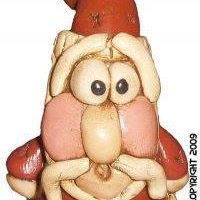Brian Ernest Lock
Deceased
from Kunkletown, PA
- Also known as:
-
- Brian E Lock
- Brian L Lock
- Brian Elock
Brian Lock Phones & Addresses
- Kunkletown, PA
- Oakland, NJ
- Palmerton, PA
- 95 Dodds Ln, Princeton, NJ 08540 • 6096831919
- Lambertville, NJ
- 95 Dodds Ln, Princeton, NJ 08540 • 6097449426
Work
-
Position:Executive, Administrative, and Managerial Occupations
Education
-
Degree:High school graduate or higher
Isbn (Books And Publications)

Mapping for a Green Future: Adelaide, South Australia, 1992 Proceedings of a Conference of the Australian Institute of Cartographers in Association with Australian Map Industries Association
view sourceAuthor
Brian Lock
ISBN #
0646111892
Us Patents
-
Apparatus And Process For Arraying Beads
view source -
US Patent:62551167, Jul 3, 2001
-
Filed:Dec 17, 1998
-
Appl. No.:9/212538
-
Inventors:Jack Dale Leber - Doylestown PA
Brian E. Lock - Princeton NJ -
Assignee:SmithKline Beecham Corporation - Philadelphia PA
-
International Classification:G01N 3510
-
US Classification:436 54
-
Abstract:A mixture of beads from a combinatorial library is held in suspension in a liquid by movement of the liquid induced by a vertically reciprocating paddle. The tips of needles in an array are immersed in the suspension, a slot being provided in the paddle to avoid collision with the needles. Liquid is drawn into the needles until a bead becomes attached to the tip of each needle. Excess beads adhering to the needles are shaken off by an electromagnetically operated vibrator, and the beads are deposited in wells of a well plate by applying a short burst of pressure to the interiors of the needles. Liquid and any debris within the needles are thereafter discharged to a receptacle by applying a higher pressure burst to the interiors of the needles.
-
Mounting Sleeve For Video Apparatus Deflection Yoke
view source -
US Patent:47869739, Nov 22, 1988
-
Filed:Aug 19, 1987
-
Appl. No.:7/068643
-
Inventors:Brian E. Lock - Princeton NJ
Mark Galambus - Indianapolis IN
Richard M. Leonard - Greenwood IN -
Assignee:RCA Licensing Corporation - Princeton NJ
-
International Classification:H04H 5645
-
US Classification:358248
-
Abstract:A display system for a video apparatus includes a cathode ray tube and a deflection yoke adapted to be adhesively mounted to the cathode ray tube. A flexible sleeve is removably attached to the tube between the yoke and the tube and closely conforms to the tube contour. The yoke is adhesively mounted to the sleeve rather than directly to the tube in order to permit removal and replacement of the deflection yoke without causing damage to the tube.
-
Pin Feeding Apparatus
view source -
US Patent:48218642, Apr 18, 1989
-
Filed:Feb 1, 1988
-
Appl. No.:7/151292
-
Inventors:Brian E. Lock - Princeton NJ
John G. Aceti - Princeton Jct. NJ -
Assignee:General Electric Company - Schenectady NY
-
International Classification:B65G 4710
-
US Classification:198368
-
Abstract:An apparatus for feeding headed pins includes a frame having thereon a hopper into which the pins are placed. A ramp extends substantially horizontally from the hopper and has a plurality of spaced, parallel slots therein which are adapted to receive the pins with the heads of the pins seated on the surface of the ramp. At the end of the ramp is a transfer shuttle assembly which is adapted to feed pins from the slots into passages in a chute which extends vertically downwardly from the end of the ramp. The upper ends of the passages are offset from the ends of the slots. The shuttle transfer means includes a shuttle plate movable back and forth across the end of the ramp by means of pneumatic cylinders, and a plurality of gates mounted on the shuttle plate. Each gate has a notch in its end which can receive a pin. The shuttle plate is moveable between a position in which the notches in the gates are aligned with the slots so as to receive a pin, and a position in which the notches in the gates are over a passage in the chute.
-
Pin Transfer Apparatus
view source -
US Patent:48610852, Aug 29, 1989
-
Filed:Feb 1, 1988
-
Appl. No.:7/151291
-
Inventors:Brian E. Lock - Princeton NJ
John G. Aceti - Princeton Junction NJ -
Assignee:General Electric Company - Schenectady NY
-
International Classification:B25B 1100
B65H 514 -
US Classification:294 871
-
Abstract:An apparatus for transferring headed pins includes a frame having a pair of spaced, parallel side rails and an end plate secured between the side rails at one end thereof. A pair of plates are secured together and connected between the side rails at the other ends thereof. The pair of plates have at least a portion of their opposed surfaces spaced from each other, and have aligned holes therethrough for receiving the pins to be transferred. A third plate having openings therethrough is slidable in the space between the pair of plates. An operating rod is connected to the third plate and can move the third plate between a first position in which the holes in the third plate are aligned with the holes in the pair of plates, and a second position in which the holes in the third plate only partially overlap the holes in the pair of plates. With the third plate in its second position, pins can be inserted through the holes and will not pass completely therethrough so that they will be held in the apparatus. When the third plate is moved to its first position, the pins are free to pass completely through the holes so that they can be transferred to another apparatus.
-
Method And Apparatus For Separating A Stamper From A Mold
view source -
US Patent:43819648, May 3, 1983
-
Filed:May 29, 1981
-
Appl. No.:6/268285
-
Inventors:Brian E. Lock - Oakland NJ
-
Assignee:RCA Corporation - New York NY
-
International Classification:C25D 120
C25C 708 -
US Classification:156344
-
Abstract:An apparatus and method for separating a metal stamper from a metal mold on which the stamper is electro-formed. The gas flows between the mold and stamper to separate the stamper from the mold which are maintained separated by the vacuum applied to their back surfaces. Means is provided for centering the mold-stamper assembly between the backing plates just before the assembly is clamped between the backing plates. Means is provided for mechanically bending the outer peripheral portion of the mold-stamper assembly back and forth to separate the peripheral portion of the stamper from the mold.
-
Concentricity Measuring Instrument
view source -
US Patent:44399251, Apr 3, 1984
-
Filed:Mar 3, 1982
-
Appl. No.:6/354205
-
Inventors:Brian E. Lock - Oakland NJ
-
Assignee:RCA Corporation - New York NY
-
International Classification:G01B 525
-
US Classification:33172D
-
Abstract:An instrument for determining the alignment of two objects includes a support in the form of a cylindrical body having a longitudinal axis. The support has means on one end for releasably mounting the support in an opening in one of the objects being aligned. The support fits into a recess in a housing which can rotate about the longitudinal axis of the support. A gauge carrier is pivotally mounted on the housing. A gauge is mounted on the gauge carrier and has a finger pivotally mounted thereon and projecting therefrom. The gauge is adapted to detect pivotal movement of the finger. The finger is adapted to contact the other object and as the housing is rotated about the support will pivot toward or away from the longitudinal axis if the other object is not in alignment with the one object. The pivotal movement of the finger is detected by the gauge.
-
Method And Apparatus For Coating Recorded Discs With A Lubricant
view source -
US Patent:43094562, Jan 5, 1982
-
Filed:Sep 23, 1980
-
Appl. No.:6/190079
-
Inventors:Brian E. Lock - Oakland NJ
-
Assignee:RCA Corporation - New York NY
-
International Classification:B05D 102
-
US Classification:427209
-
Abstract:The surfaces of a recorded disc are coated with a thin layer of lubricant by forming in an atomizer chamber droplets of the lubricant supported in air. The droplets are formed by passing a flow of air through a supply of the lubricant in the atomizer chamber at a rate and pressure such that the air causes the lubricant to be blown into the space above the supply as fine droplets. The air laden with the lubricant droplets flows out of the atomizer housing to a pair of nozzles in a coating chamber. The nozzles direct the air laden with the lubricant droplets onto the surface of the recorded disc which passes between the nozzles. Excess lubricant which does not coat the disc is collected in the coating chamber and carried back to the atomizer housing.
-
Fluid Filling Apparatus
view source -
US Patent:46932860, Sep 15, 1987
-
Filed:Jun 13, 1986
-
Appl. No.:6/873959
-
Inventors:Brian E. Lock - Princeton NJ
Jeffrey S. Wojnar - East Windsor NJ -
Assignee:RCA Corporation - Princeton NJ
-
International Classification:B65B 3100
-
US Classification:141 61
-
Abstract:A piston is forced in a direction to disengage from a cylinder containing a fluid such as an adhesive. The piston while in engagement with the cylinder abuts a stop in response to the disengagement force. While the disengagement force is kept on the piston, the chamber between the fluid and piston in the cylinder is evacuated. After evacuation, the disengagement force on the piston is gradually released and the piston is forced against the fluid to squeeze the fluid through fluid couplings into an array of corresponding containers releasably secured to the piston, simultaneously filling the containers without exposing the fluid to air.
Resumes

Brian Lock
view source
Brian Admiral Lock
view sourceSkills:
Locksmithing
Access Control
Access Control

Brian Lock
view source
Brian Lock
view sourceWork:
A.q Alloys & Forge
Vice President
Vice President

Brian Lock
view source
Yes At Yes
view sourcePosition:
yes at yes
Location:
United States
Industry:
Accounting
Work:
yes
yes
yes

Brian Lock
view sourceLocation:
United States
Googleplus

Brian Lock
Work:
BRL Consulting Ltd - Director

Brian Lock
Tagline:
Maybe old in years but young at heart.

Brian Lock

Brian Lock

Brian Lock

Brian Lock

Brian Lock

Brian Lock
Youtube
Myspace

Brian Lock
view source
Brian Lock
view sourcePlaxo

BRIAN LOCK
view sourceOlympia WA
Flickr
Classmates

Brian Pedersen (Lock)
view sourceSchools:
La Quinta Middle School La Quinta CA 1996-2000
Community:
Dick Gomez, Jackie Dillon

Brian Lock
view sourceSchools:
Glenmeadows Elementary School Calgary Azores 1960-1965, Vincent Massey Junior High School Calgary Azores 1965-1966
Community:
Lee May, Greg Clark

Brian Lock
view sourceSchools:
Notre Dame - Cathedral Latin School Chardon OH 1993-1997
Community:
Cari Stepp, Preston Clark, Rachel Dodds, Colin Mcconnel, Ashlie Rodriguez, Kristin Boucherle

brian tang (Lock)
view sourceSchools:
Macklin High School Macklin Afghanistan 1977-1981
Community:
Johanna Gette, Sue Stevens, Ken Fisher

Notre Dame - Cathedral La...
view sourceGraduates:
Kenneth Landenberger (1991-1995),
David Golubski (1990-1994),
Amy Olup (1989-1993),
Brian Lock (1993-1997),
Carmela Vanni (1994-1998)
David Golubski (1990-1994),
Amy Olup (1989-1993),
Brian Lock (1993-1997),
Carmela Vanni (1994-1998)

Syracuse University - Max...
view sourceGraduates:
Brian Lock (1989-1990),
Jennifer Leeds (1989-1990),
Julie Dombrowski (1999-2000),
Juan Gonzalez Jr (1984-1985)
Jennifer Leeds (1989-1990),
Julie Dombrowski (1999-2000),
Juan Gonzalez Jr (1984-1985)

Brian Lock
view source
Brian Lock
view source
Brian Lock
view source
Artist Brian Lock
view source
Brian Lock
view source
Brian Lock II
view source
Brian Lock
view source
Brian Lock
view sourceGet Report for Brian Ernest Lock from Kunkletown, PADeceased
















